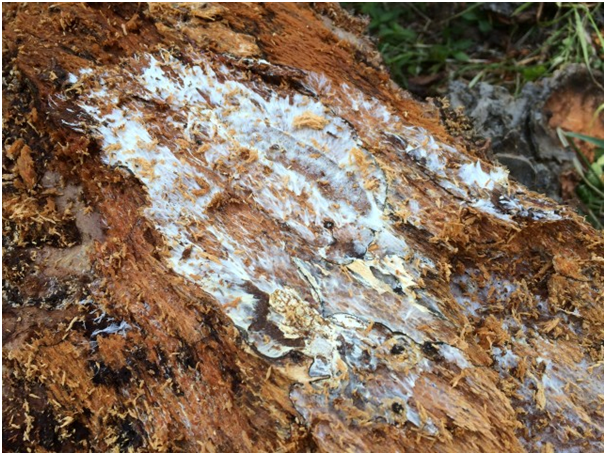Most of us take the trees in our garden for granted. They withstand so much from the elements that we tend to think of them as immortal. However, there are many threats to the health and wellbeing of our trees. Here are some common arboreal issues that gardeners encounter each year in their gardens:
- Honey fungus is a yearly problem. The fungus enters the tree through a bark wound and badly affects those trees that are already struggling or very susceptible. You can check your tree by peeling back some of the bark and see if there is a cream-coloured residue that smells like mushrooms present. To avoid this pesky fungal problem, plant trees that have resistance such as yews, beeches and oak trees.

- Powdery mildew occurs during the warmer summer months and affects oaks and maples. The mildew appears as a result of poor air circulation and dry roots. Water your tree thoroughly and lay some mulch to help. It’s also a good idea to avoid using a nitrogen-rich food for your garden.
- If you’re noticing deformed acorns, then you might have a problem with knopper gall wasps. These pests were introduced to the UK during the early part of the 20th century and they lay their eggs inside the acorn, changing its chemical make-up and deforming the acorn. Thankfully there are still plenty of unaffected trees and the damage caused is not very serious.
- Horse chestnuts can be badly blighted by a type of moth. It causes a yellowing of the leaves but is not a serious concern. What is more concerning is the presence of a bleeding canker. These can enter the tree through a wound and results in a black ooze leaking from the wound site. Current advice is to leave the tree as many are able to heal on their own. However, if you’re worried about the health of a tree, always contact a Tree Surgeon Dorset like https://kieranboylandtreeservices.com/
- Ivy is a perennial headache for many gardeners and homeowners. Ivy generally only grows on established trees and the higher it climbs, the slower it grows due to the additional shading. It does provide an important ecosystem for a wide range of wildlife, so does have its positive points. If it’s causing structural damage, you will probably want to remove it though.
- Squirrels can be a nuisance, particularly if you have tall trees of between 20 & 40 feet high. They gnaw on branches, stripping the bark so you might wish to consider anti-squirrel collars to apply to the trunk about one metre from the ground.

- Conifers and leylandii showing signs of browning foliage and dying back could be the result of an attack from aphids. Avoid your usual autumn pruning and any weed killer solutions containing glyphosate that can damage hedge roots.